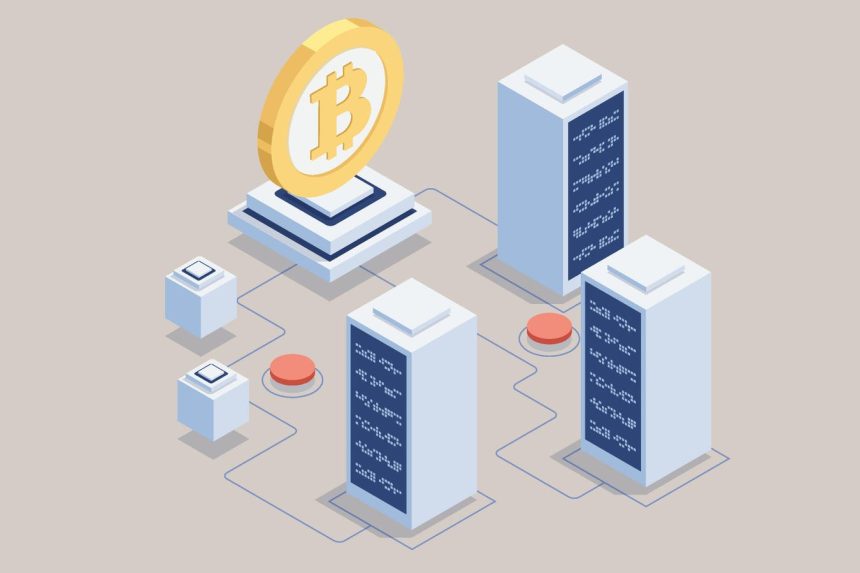Cryptocurrencies emerged in the aftermath of the 2008-2009 financial crisis as an innovative alternative to traditional banking systems, aiming to democratize finance. Underpinned by blockchain technology and smart contracts, decentralized platforms disintermediate central control and facilitate peer-to-peer transactions—a revolutionary approach in sharp contrast to the centralized nature of traditional financial systems. Over the past 15 years, the crypto sector has undergone dramatic cycles of euphoria and despair, with 2022 marking the nadir of the latest downturn. In 2024, there has been a significant resurgence, with various cryptocurrencies surging to new highs. Amidst the renewed fervor, investors and entrepreneurs are committing resources to build the infrastructure and applications needed to spur the next wave of widespread adoption, underscoring a steadfast belief in the technology’s transformative potential.
In 2024, the tokenization of real-world assets (RWAs) has experienced substantial growth, with leading financial institutions such as JPMorgan Chase
JPMorgan Chase
HSBC
BlackRock
The crypto asset markets, with their global reach and 24/7 trading on cryptocurrency exchanges, enable transactions in tokenized RWAs between buyers and sellers who might otherwise find such dealings unattainable. Fractional ownership democratizes investment, extending market reach and enhancing transparency. Tokenized RWAs unlock opportunities for decentralized applications (dapps), engendering groundbreaking business models and spawning cutting-edge products, fresh revenue streams, and strategic alliances. According to a recent report, the market for tokenized assets could reach $10 trillion by 2030 as traditional financial institutions increasingly adopt blockchain technology. “Tokenizing real-world assets, from luxury items to ESG projects and precious metals, provides global access to financial stability. By making these first-world assets accessible to emerging markets, we’re driving significant social change and ensuring everyone can seize the opportunities they deserve,” said Bernard Yeung, CEO of DualMint.
The tokenization of physical RWAs democratizes access to investments in premium holdings across diverse asset classes currently inaccessible to most investors. The allure of having ownership rights to a masterpiece by artists like Andy Warhol or Pablo Picasso, a rare vintage wine, or iconic real estate is compelling. Nevertheless, the high prices of these assets often place them beyond the reach of the average investor despite their significant appeal and potential for steady appreciation. Tokenization provides a transformative solution to this exclusivity by dismantling investment barriers and enabling a wider pool of investors to own these prestigious assets, thus opening new opportunities for enthusiasts and investors alike. However, regular appraisals may be necessary to ensure the token’s value proxies the fluctuating value of the underlying asset. Custody issues, such as storage, maintenance, and insurance of the physical asset, can become challenging when multiple token holders are involved.
The tokenization of financial RWAs exponentially enhances operational efficiencies for financial institutions by automating processes through smart contracts, eliminating intermediaries, streamlining settlements, reducing reconciliation efforts, improving compliance, and enabling programmable asset behaviors. It holds tremendous potential to optimize existing transaction systems, leading to significant cost savings for the enterprise. Moreover, banks are increasingly adopting this technology not only to realize these financial benefits but also to attract younger, cryptocurrency-savvy customers, tapping into a new client demographic seeking innovative financial solutions.
The endorsement and active exploration of tokenization by industry heavyweights such as Blackrock, JPMorgan Chase, Franklin Templeton, Goldman Sachs
Goldman Sachs
The tokenization journey begins with acquiring real-world assets, followed by their on-chain tokenization, and culminating in the distribution of RWA tokens to on-chain users. This process starts with careful asset identification and valuation, ensuring legal compliance, selecting a suitable blockchain platform, and crafting smart contracts to digitally represent the assets on the chosen platform for efficient and transparent management. Following the creation of tokens representing fractional ownership, these are recorded on the blockchain’s immutable ledger. To ensure these assets are well-protected, robust custody solutions are crucial. These tokens can then be actively traded on integrated marketplaces and exchanges, offering investors round-the-clock access to previously illiquid assets. “Thousands of new RWA tokens are poised to enter the market, thanks to years of global development of tokenization solutions. These platforms aim to bring trillions of assets on-chain, spanning stocks, bonds, real estate, precious metals, private equity funds, collectibles like wine, art, and more,” says Herwig Konings, CEO of Security Token Market.
While tokenizing physical RWAs offers significant opportunities, it also presents complex regulatory challenges. Compliance with securities laws is crucial yet complex when tokenizing physical RWAs, as regulatory requirements vary by jurisdiction. Issuers must navigate the diverse legal frameworks governing token ownership and transfer, ensuring they align with relevant property and contract laws. The RWA’s specific characteristics influence the tokenization structure, with different ownership vehicles carrying varying costs, tax consequences, and statutory requirements. Securities laws pose challenges, as tokenization allows RWAs to be sold in broader markets, potentially triggering prospectus, and registration requirements. Robust KYC (know your customer) functionality is necessary to determine and verify token purchasers’ identities and locations. Anti-money laundering laws require registration as money services businesses and compliance with reporting and recordkeeping requirements. Privacy and consumer protection laws must be adhered to, safeguarding individuals’ rights and protecting against data breaches. Michael Juul Rugaard states, “Despite its vast potential, asset tokenization faces significant challenges, including technical interoperability, market adoption hurdles, and fragmented regulations. The concept of a globally accessible token economy is hindered by unclear and diverse regulatory requirements, making the global distribution of tokenized assets costly and complex due to the need for extensive legal consultations across multiple jurisdictions.”
Successful tokenization requires selecting the appropriate blockchain with smart contract functionality that aligns with the project’s legal requirements and applicable laws. The optimal blockchain choice depends on the issuer’s business, compliance needs, liquidity, market, and technology preferences. Fostering vibrant secondary markets requires interoperability among siloed platforms by developing shared technical standards and application programming interfaces (APIs). Integrating with legacy systems, incorporating smart contracts, and balancing transparency with privacy on distributed ledgers are critical technical challenges for successful tokenization projects.
DualMint pioneers a unique approach to tokenizing diverse real-world assets (RWAs), including artworks, environmental projects, and luxury goods. At its core is the Dual Provenance Protocol, which establishes a bi-directional link between digital and physical provenance, integrating blockchain technology, legal document validation, minting processes, and secure digital signatures. The company’s dynamic portfolio, featuring projects like Toji NFT
APENFT
DualMint has developed a comprehensive ecosystem with value-added services such as logistics, legal management, insurance, authentication, anti-counterfeiting measures, lifestyle investments, and data privacy. This holistic strategy enhances the management and security of tokenized assets, ensuring the efficient handling of physical assets. The strategic tokenomics of the DUAL token balances stakeholder interests and community involvement, promoting a robust ownership economy. Through its commitment to authenticity, environmental stewardship, and alignment with luxury brand values, DualMint bridges traditional asset management with digital innovations, solidifying its position as a leader in the NFT marketplace.
In conclusion, tokenizing physical assets revolutionizes finance, democratizing investments and enhancing financial processes. However, this innovation faces regulatory, technical, and operational challenges. Successfully navigating these obstacles requires meticulous compliance with international and local laws and innovative solutions, ensuring interoperability among financial platforms and seamless integration with legacy systems. Global regulators, financial institutions, and technology providers must foster innovation while ensuring security, transparency, and fairness, unlocking unparalleled opportunities for businesses and individuals alike.
Read the full article here
















